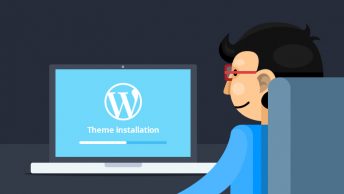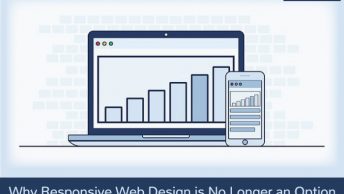I don’t know about you, but few things bug me more than websites that are so cluttered and confusing you can’t find what you’re looking for. A cluttered web design is like one of those houses you see on that TV show Hoarders. It’s frustrating and unwelcoming.
Clean website design, on the other hand, is easy on the eyes. It’s welcoming, and it makes it easy to find the information you’re looking for quickly.
To create a clean website design, start by following these simple tips.
• Use white space—Repeat after me, “White space is my friend.” Every inch of your website doesn’t need to be covered with text or images. Break things up a little bit using blank, white space throughout your website. White space makes your website easier to scan (remember, people tend to scan content online rather than read it word for word), and it also helps you place emphasis on important images or text. Think of white space as part of your design, and use the tool accordingly.
• Eliminate unnecessary elements—Each page on your website should serve a specific purpose. Anything on that page that doesn’t contribute to that ultimate goal should be removed. Common examples of unnecessary elements include blinking banners, annoying flash images, scrolling text, and unrelated advertisements. “Clean” is the name of the game.
• Don’t reinvent the wheel with your navigation—Over the past several years, people have come to expect to use website navigation in a certain way. Typically, the navigation for a website is located either along the top or on the left-hand side. Don’t try to get all clever and cutesy by switching things up. You see this a lot on Flash-based websites. The navigation is hidden in the design (e.g. clicking on the branches of the tree illustration takes you to different pages), and it takes forever to find the information you’re looking for. Today’s web user is in a hurry, and he’s not going to take time figuring out your new navigation scheme. Keep it simple!
• Use good contrast—This isn’t as much of a problem as it was 5-10 years ago, but it still pops up occasionally. Above all else, the text on your website needs to be easy to read. Personally, I prefer black text on a white background, but you can get away with other colors if you use good contrast. Readers shouldn’t have to struggle to read your copy, and they shouldn’t have to highlight the text to make it more visible.
• Incorporate images that add to your message—If you want to scare your visitors away, create a website that is nothing but text. Long passages of text with no graphic elements are intimidating, and they cause readers to click the “back” button almost immediately. Add a little spice to your website and break the text up by incorporating high-quality images on your website. Just make sure your images aren’t there just for the sake of being there; tie them into the main message of the page.
• Add headings to create neat sections—There’s nothing wrong with having a good amount of copy on your website. However, if you present it poorly, it will overwhelm visitors. One easy way to make your copy easier to scan is to break it up into smaller sections. Label each section with a bolded heading, and it instantly becomes less intimidating and more scannable. Tip: Use descriptive, keyword-rich headings that let the readers know exactly what each section is about.
Which web design tips would you add to this list? Share your thoughts in the replies!







If your intended audience is global, ensure that your site can be understood and used by people outside your home country. A common failing of US sites in particular is the presence of forms that demand to know state, city and zip code. Some of us live in countries that don’t have states, and we don’t all live in cities or have zip codes. Make such fields optional, not mandatory.
If your intended audience is global, ensure that your site can be understood and used by people outside your home country. A common failing of US sites in particular is the presence of forms that demand to know state, city and zip code. Some of us live in countries that don’t have states, and we don’t all live in cities or have zip codes. Make such fields optional, not mandatory.
Great article! I’ve become recently aware of the need for white space and have been desperately trying to put more ws in my designs but it’s actually really hard! I cling to my old ways.
Great article! I’ve become recently aware of the need for white space and have been desperately trying to put more ws in my designs but it’s actually really hard! I cling to my old ways.
Agree with the first point. White does seem to make a special impact.
I go with the number 4 tip which is to have a good contrast and additional to that is choice of color to put on in the website theme. A lot of websites before and still nowadays have a problem with this issue. A good color management make the site more good and clean and one thing that must be consider is that the color must represent on what kind of website that you owned. For example if its for a business, a good color for it is simply blue and white.